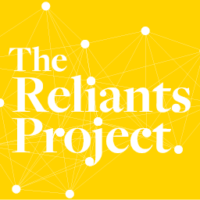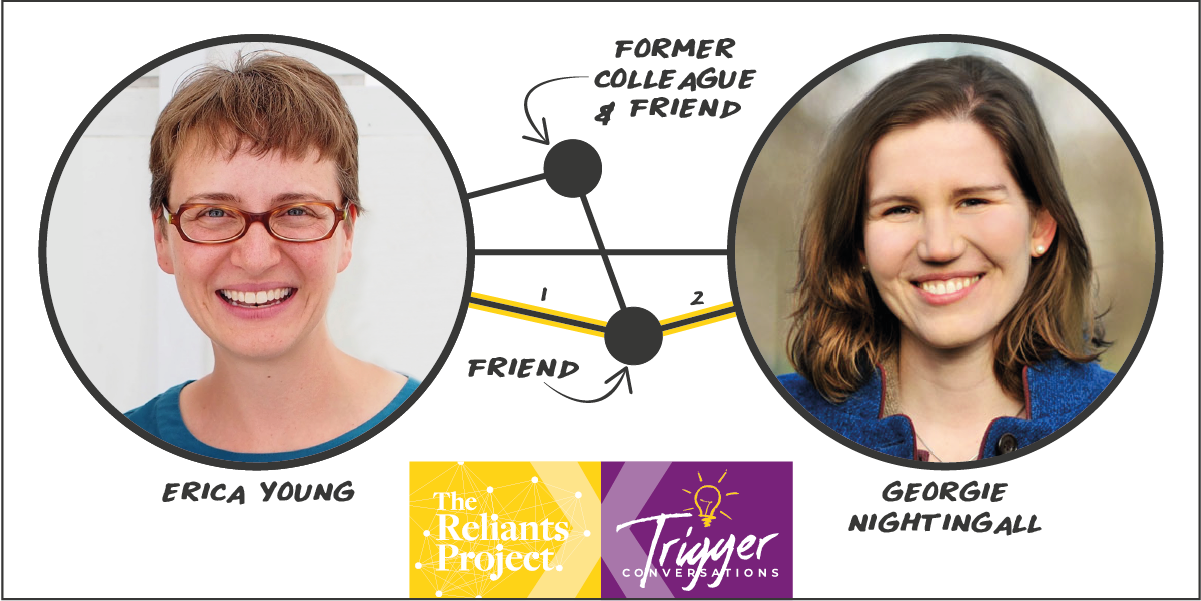Podcast: Play in new window | Download
In this episode, Georgie and I focus on first-time conversations when there’s very little context. These types of chats can happen when you’re standing in line somewhere or have been sent to a virtual breakout room at a conference. We call them forming conversations because there’s an opportunity to form a connection with the other person, but sometimes it’s hard to know where to start. With each example, try not to focus on the content on the conversation. Instead, notice what types of questions we ask, how we answer them, and how we connect one topic to another. We hope you identify things that you want to try next time you’re in the same situation.
In this episode Georgie and I try out 3 different ways of kickstarting the conversation:
- First, we explore how you can take a simple, standard question like “How are you?” and use it as a springboard to a more interesting discussion
- Second, we try asking a question specific to the moment in order to illicit a non-standard response and give us insight into the other persons interests or values
- Third, we start with a statement to invite them into a dialog more subtly
- After each example, we talk about what we noticed in the conversation and how that influenced the direction and what we surfaced.
- We highlight effective strategies that you can use when you’re speaking to someone for the first time.
- We talk about specific ways to end the conversation and how to ask for the opportunity to connect again
SHOW NOTES
- First conversation example, starting with “How are you?” [2:28]
- First conversation analysis start [7:41]
- Ways to respond to “How are you?” [8:05]
- Asking questions that surface motivations [9:23]
- Choosing stories that show empathy [11:15]
- Providing hooks for the other person to latch on to [12:00]
- Exposing vulnerability in order to build trust [13:07]
- What makes conversations without context unique [14:31]
- Why sharing labels and facts can be counterproductive [14:42]
- Second conversation example, starting with “How did you end up choosing to be here right now?” [15:15]
- Second conversation analysis start [21:12]
- Playing with the literal and figurative [21:18]
- How using metaphors can be powerful [22:24]
- How to use virtual backgrounds to stimulate conversation [23:08]
- Sharing something that is quirky about you [24:03]
- What’s the right amount of time to talk [24:52]
- Looking to each other for signals of how to behave when there’s no context [25:28]
- Identifying which hook you want to latch on to and how to maintain active listening [26:30]
- Remembering that the reasons people are similar may be different [28:10]
- Third conversation example, starting with “You look incredibly happy!” [29:02]
- Third conversation analysis start [35:56]
- The “yes and” game [36:00]
- Starting conversations with statements instead of questions [37:22]
- Connecting the dots between shared reference points [39:01]
- Deciding what to explore in a conversation [40:40]
- Conversation is an act of improvisation [41:11]
- Ways to end a conversation [41:29]
- Specific ways to end a conversation [42:28]
- Asking to remain connected, but not requesting a follow-up conversation[43:10]
- Importance of asking for contact information at private events [43:40]
- Being specific about how you would like people to connect with you and set boundaries [44:45]
- Offering to share something with the other person in order to stay connected [45:58]
- Episode key takeaways [46:42]

